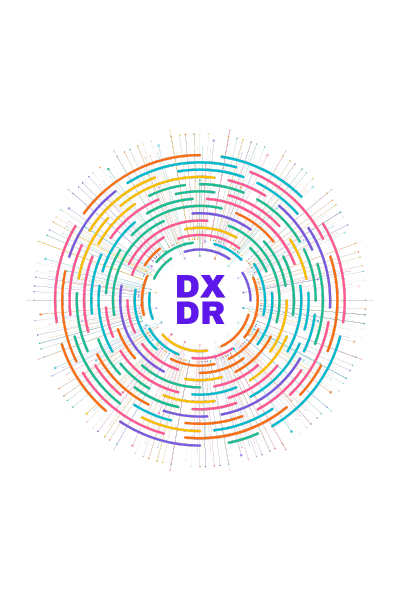Four Ways To Get The Talent You Want

If you're looking for talented people you can turn into cultural doppelgängers—rather than seeking to align productive differences toward a common goal—you're doing it wrong.
Talent leaders should hire for “culture fit”—at least, that’s what we’ve heard.
For decades, actually, that’s been the most widely recommended (and generally accepted) best practice. The term “culture fit” has itself created an industry segment worth billions of dollars.
Today, however, conventional wisdom is coming under scrutiny. And in light of today’s accelerated pace of innovation, I would argue that hiring for culture fit is no longer advisable—nor is it a method for achieving sustainable growth. It’s just not the best way to grow or sustain engagement and productivity in teams or organizations.
If you’re hiring for culture fit, you’re doing it wrong. To build, scale, and sustain your workforce to meet the demands of Industry 4.0, you’ll need to take four crucial actions when seeking external talent or building internal teams. In this chapter, I’ll explore them.
1. Align talent to these four cultural identities (or environments)
“Culture” is a broad term, and it can mean many different things to different people. Some groups will define it as something like “a core set of values and practices.” Others view it more like “their style” (think nap rooms and beer on tap in the break room).
But, what does the term “culture” truly encompass?
According to the Business Dictionary, “organizational culture” is “the values and behaviors that contribute to the unique social and psychological environment of an organization.” It’s the ethos, values, and frameworks for how a company conducts itself internally and externally. In other words, an organization’s culture includes its core values, its expectations for behavior, its decision making frameworks, how it conducts itself with others, how its information flow operates, its power structures—even how one is allowed to express oneself within the organization. This cultural identity is crucial, as it affects productivity, performance, employee engagement, and customer relations.
When thinking about culture, we should be thinking about alignment rather than fit. “Fit” implies that your organization seeks to indoctrinate new members into its specific way of life—to clone its vision of the ideal member in everyone who joins it. When we talk about “fit” we create the potential for exclusion. It prompts us to seek someone who already embodies the values and principles we think are best (then seek to “fit” them into a pre-existing spot in our organizations), and ignore others.
Achieving “alignment,” however, is different. Alignment involves embracing diversity of thought and building inclusive, innovative, community-driven teams that are all oriented toward shared goals, even if they look and think differently from one another.
The necessity of thinking about “alignment” rather than “culture fit” becomes even more apparent when we examine the complexity of organizational culture. Every organization has four separate cultures (yes, you read that correctly!). Aligning talent “with culture” means aligning it with: your main culture, the subculture of the department, the team culture, and your geographic culture. Visualize the engine that runs your organization. You’ll see gears that move you along. Then visualize small gears for your people, team, departments, verticals, and your main organization. Each of these gears contributes to the next in order to meet goals and propel the business forward. When we have well-oiled machines (that is, when everyone is doing something better together), we are able to propel our mission and realize our organizational vision.
Let me explain them in more detail.
The main culture
This is your overarching company ethos, your “way of doing things.” It’s the primary “gear” that’s moving you externally in the market. It’s what others recognize as “you” and, ultimately, is why clients come to you. It is the “who you are” part of your culture. When seeking alignment, look for:
- General characteristics and behaviors that agree with who you are
- Brand fit and representation that aligns
- Passion or purpose that flows into organizational mission
The subculture
Verticals or departments bring their own values to the organization’s cultural mix. Operationally, each behaves differently and pursues different goals, all of which feed into the main culture. For example, engineers building solutions think in very different ways than marketing creatives do. The goals of solution builders are very different than those of creatives. Be aware of the mix. While remaining open and inclusive in your hiring practices, don’t overlook the dynamics of a subculture. In this relationship look for:
- Ability to cross-collaborate
- Open communication practices
- Big-picture thinking
- General energy and personality fit
- Thinking styles
The team culture
The greatest alignment you seek is right here. Team culture determines the team’s manner of working together, day-to-day, to solve problems. Team culture drives efficiency, productivity, innovation, engagement, and results. This is what allows you to build, scale, and sustain. When thinking about alignment, look for:
- How a person responds to new information and then contributes to the process – you’ll want a well balanced team to drive all aspects of change, not just natural innovators.
- Communication styles
- Personality styles
- Behaviors and thought practices
- Alignment to open values
- Individual “magic” (see below) and potential for (and desire for) for growth
The geographic culture
Think of geographic culture not as an engine gear itself, but rather the “grease” that aids in frictionless movement. This cultural filter might not directly contribute to meeting goals of an organization, department or team. It does, however, contribute to reducing conflict, eliminating misunderstanding, and communication delays. You’ll be looking to align with local geographical norms and global views. Considering this angle of potential alignment, look for:
- An understanding of the geographical culture
- A willingness to learn and integrate geographical norms
- An awareness and intelligence of the practices, norms or variances from one’s own
2. Look for the magic
If you’re seeking people to just “fill a job,” then you’re doing it wrong.
If you think about the people you bring into your organization as partners instead of employees, you’ll have a better rate of return on your relationships. This mindset of employing partners, co-creators, and collaborators to solve problems for your clients provides a more inclusive, open approach. We use technology to “do things.” But when you take the time to find the magic within people, they will not only be engaged and perform better, but also build careers alongside you.
When assessing specific competencies, be sure to:
- Push beyond a resume, CV, or formal degree
- Look beyond what someone has been “paid to do” (life experience and volunteer roles actually yield amazing competencies in people)
- Look beyond a role or title someone has held previously
- Look for people who are not happy staying in their lanes. The potential lies in someone who seeks opportunities for growth and challenges to stretch themselves.
Remember, of course, that the demands of Industry 4.0 will require:
- Ability and capacity to engage with fast cycles of change
- Interpersonal skills like communication, collaboration and emotional intelligence
- Leadership skills for running projects, teams and organizations
- Open behaviors and values
- Capacity to navigate open process and decision making models
And when interviewing for talent that aligns with your organizational culture, consider asking:
- What are you passionate about?
- Where or how do you want to get involved from a technical perspective?
- What do you want to learn?
- What is one challenge you would like to overcome?
- What perspective on teaming do you have?
- How do you see yourself as a leader?
3. Be open in your sourcing
Becoming a dynamic, inclusive organization requires an organizational culture built on open values. Only true diversity of thought can produce innovations at the level required to thrive today.
We’ve been working to break down barriers to diversity in the workplace for decades, and we still have a tremendous way to go in our effort to close gaps. “Diversity” goes beyond religion, gender orientation, ethnicity, and so on. We must stop focusing on the labels society has assigned others so we “know where they fit.” That is a fear-based model of control.
Building our teams based on “fit” can actually create exclusive tribalism rather than what we actually intend: a sense of belonging. For example, employing hiring practices that seek talent from one primary background or educational institution will end up with exclusive environments that lack diversity of thought (even though they might represent good “culture fits!”).
We want to have people from different walks of life, with different backgrounds, and with different mindsets, so that we can collaborate and create unique solutions. Your organization should have no place for a “them versus us” mentality, which already seeds a broken system. Doing better together takes a variety of perspectives and experiences.
After a nine-month field study eventually published in the American Sociological Review, Lauren Rivera, associate professor at Northwestern University’s Kellogg School of Management, concluded that when hiring managers talk about “fit,” they focus on things like hobbies and biographies. Have you ever heard of the airport test, the question of “would you enjoy sitting next to this person on a long flight?” Rivera stated in her report, “In many respects, [hiring managers] hired in a manner more closely resembling the choice of friends or romantic partners.”
The tech world has become obsessed with hiring for culture fit, and has done itself (and the entire organizational ecosystem) a disservice as it has fed a growing diversity problem. For open ecosystems—communities and other organizations—to stay true to their values, building heterogeneous teams can boost performance, new ideas, and gain advantage.
4. Build (talent), don’t buy
Last year I interviewed Aaron Atkins of Slalom about a more open approach to talent acquisition. Aaron heads up acquisition in Southern California for this open organization. He shared that Slalom doesn’t seek out the “A-Players” but rather seeks people with potential for aligning creatively with the organization’s goals. Once candidates are a part of the team, Slalom begins to build talent and create utility players. Atkins had this to say about a new way forward:
“It is how we are educating and training our new folks to move towards culture change. This all comes back to a build versus buy mentality. So some organizations are large enough that they can go in and buy. They can go and acquire a new company, or they can go hire a bunch of people in the sense that we’re going to buy these folks.
Slalom is much more of the build mentality of—how do we identify the right people, with the right capabilities, and train them to have the right skill sets. So it’s moving more towards training and development of building our next level of talent.”
Slalom realized they had clients seeking specific technical talents and there was an open space that needed serving. Recognizing they were losing money because they didn’t have the “right number of folks” was not okay with them. Instead, they set about internally building competencies within their existing talent pool. Now, whenever someone is on the bench and not at a client site, they’re trained in the new skills to serve clients needs. Slalom creates utility players that can be cross-functional across a wide variety of solutions and services, which only increases their value from a market perspective.
Your challenge, then, is to take a hard look at your organization’s hiring practices and methodologies. Transforming your organizational culture—your way of doing things, including the way you work—will require taking new approaches to build truly open organizations. Open organizations, at their core, must stand on all five principles to function and produce results. Begin by building inclusive practices as you seek out potential in either your existing talent pool or those you are looking to hire.







